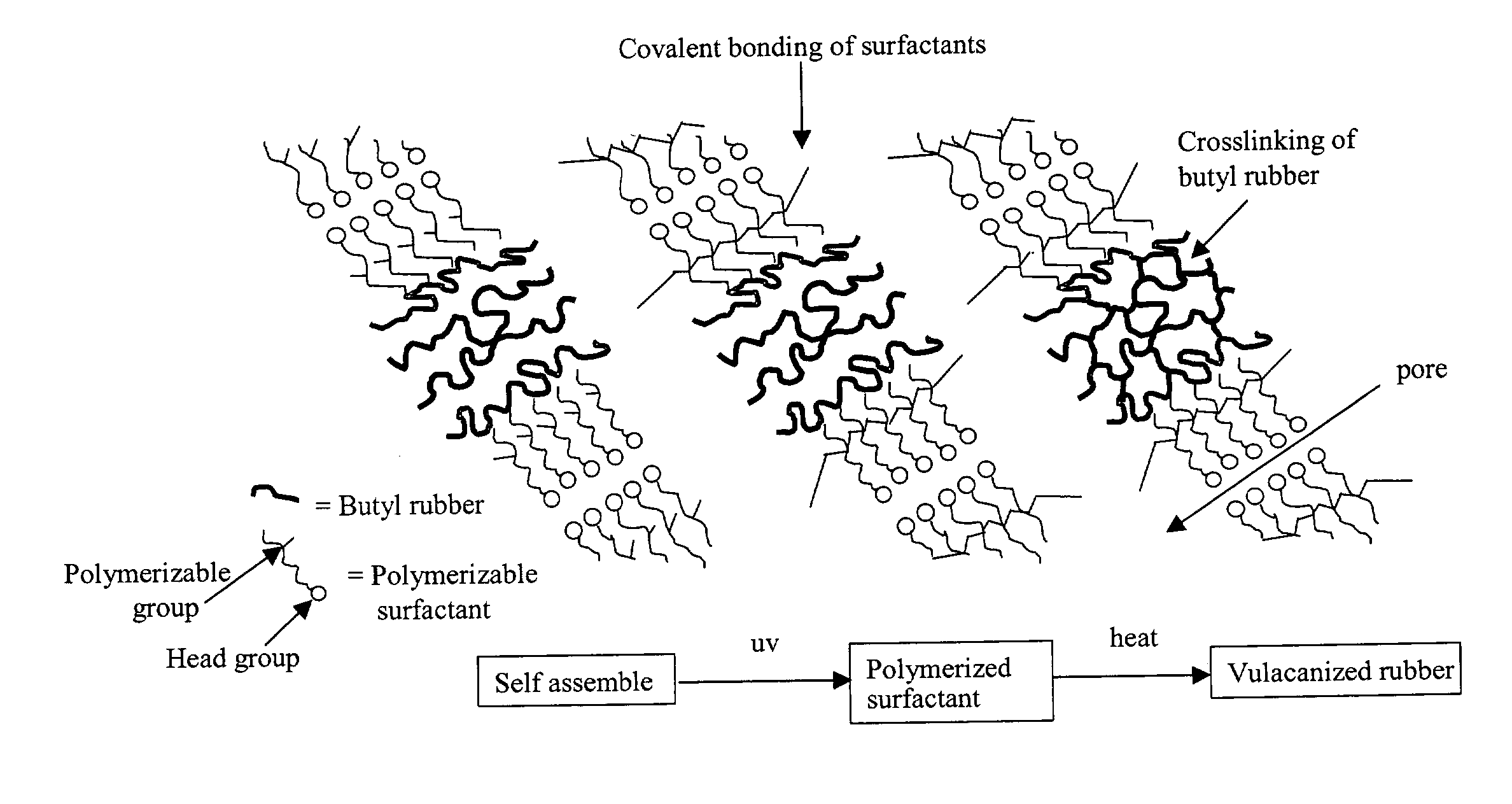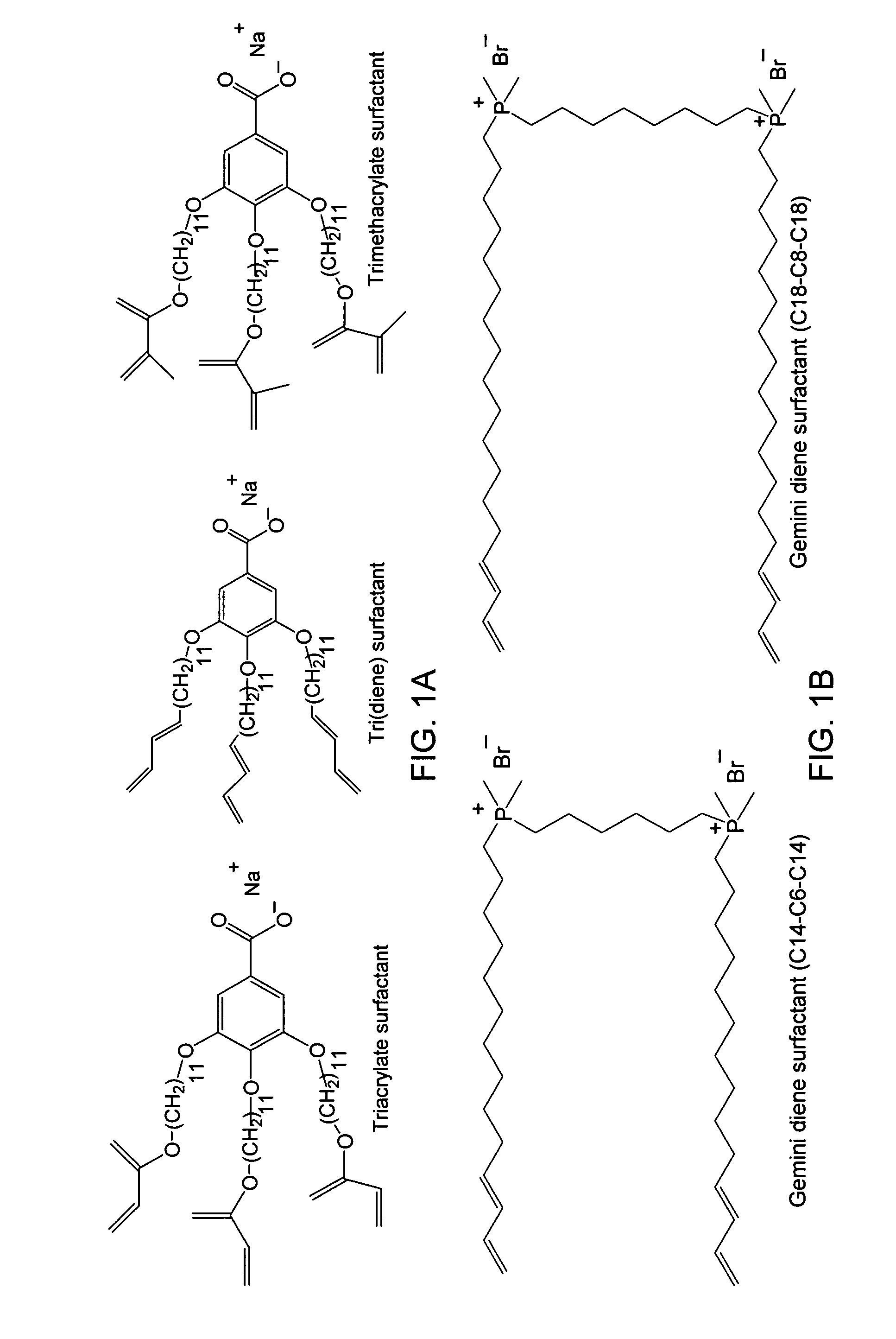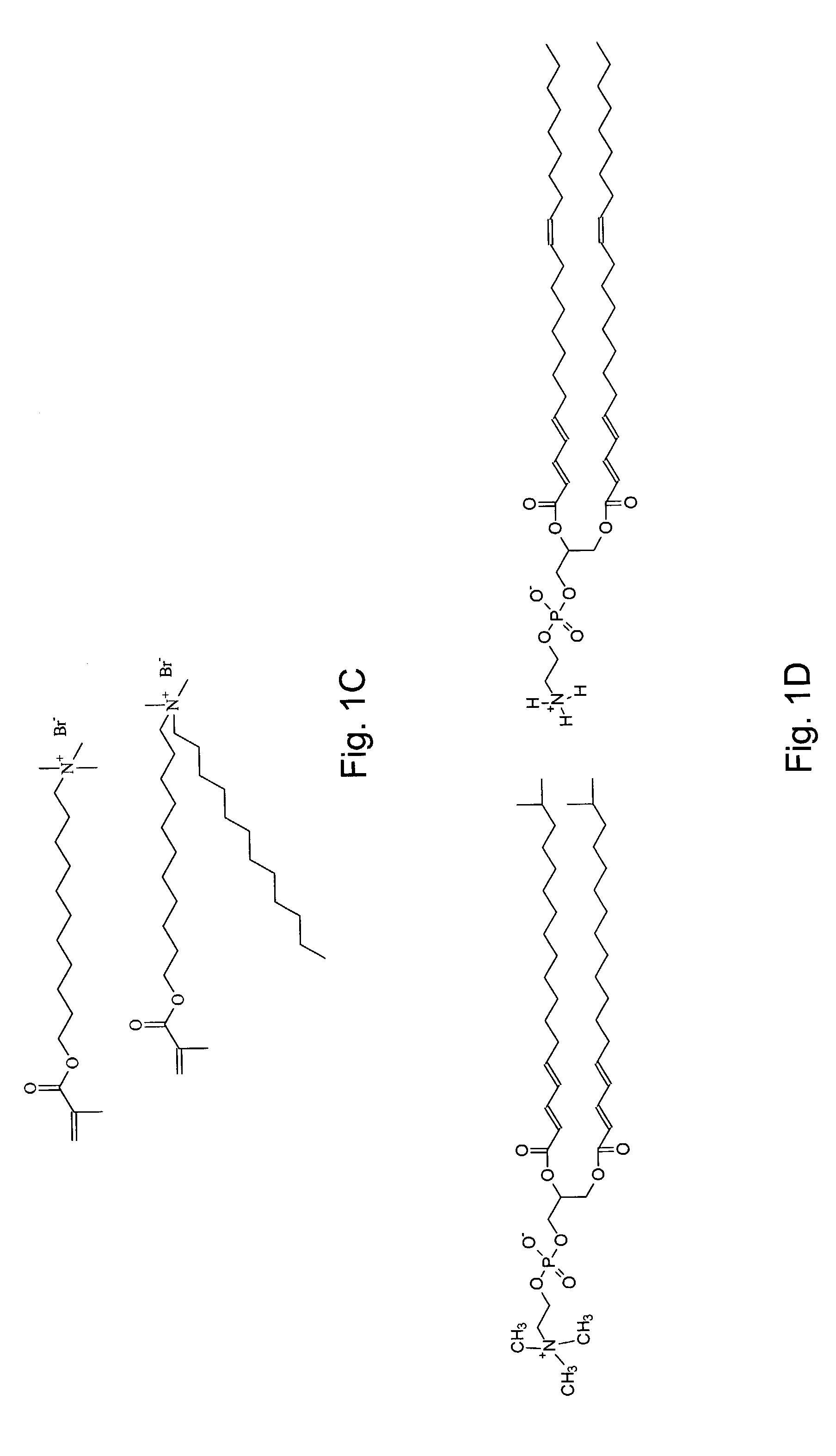Nanoporous composites of polymerized lyotropic liquid-crystalline monomers, and hydrophobic polymers
a technology of liquid crystal monomers and nanoporous composites, applied in the field of nanoporous composites, can solve the problems of inability to readily achieve inability to employ conventional materials processing to achieve the effect of nanometer-scale structural control in the production of synthetic materials, and inability to meet the requirements of most materials applications
- Summary
- Abstract
- Description
- Claims
- Application Information
AI Technical Summary
Benefits of technology
Problems solved by technology
Method used
Image
Examples
example 1
Procedure for Preparation of LLC Pastes Containing Sodium 3,4,5-tris(ω-acryloyloxy undecyloxy)-benzoate, Water, and Exxon Butyl 165 (27 wt % Solution in Hexanes)
[0163]Mix the following components: sodium 3,4,5-tris(ω-acryloyloxyundecyloxy)benzoate (92.5 wt %), water (5.9 wt %), and photoinitiator (2-hydroxy-2-methylpropiophenone, 1.6 wt %). To the LLC paste obtained add a butyl rubber solution (27 wt % in hexanes, Butyl 165, Exxon) and then thoroughly mix. The final composition is (after hexanes evaporate during the mixing process): acrylate monomer (sodium salt) (77 wt %), water (4.9 wt %), photoinitiator (2-hydroxy-2-methylpropiophenone, 1.3 wt %), and butyl rubber (16.8 wt %). “Exxon Butyl 165” is a butyl rubber having 1.2 mole % unsaturation (from isoprene) and a Mooney viscosity of 45±4. Butyl rubber is prepared by copolymerizing small amounts of isoprene (1 to 3% of the monomer feed) with isobutylene catalyzed by AlCl3 dissolved in methyl chloride.
[0164]X-ray Diffraction and P...
example 2
Alternate Procedure for Preparation of LLC Pastes Containing Sodium 3,4,5-tris(ω-acryloyloxy undecyloxy)-benzoate, Water, and Butyl 165 (27 wt % Solution in Hexane)
[0166]Mix the following components: sodium 3,4,5-tris(ω-acryloyloxyundecyloxy)benzoate (77 wt %), water (4.9 wt %), photoinitiator (2-hydroxy-2-methylpropiophenone, 1.3 wt %) and butyl rubber (16.8 wt % butyl rubber as a 27 wt % solution in hexane. Note the hexane will be evaporated and is not including the wt % calculations). Re-mix the components. The hexane is allowed to evaporate.
example 3
Procedure for the Preparation of Inverted Hexagonal Structured Nanocomposite of 20% Butyl Rubber (Vulcanized) and Sodium 3,4,5-tris(ω-acryloyloxy undecyloxy)-benzoate
[0167]Thoroughly mix the following components: 0.05 g water, 0.012 g 2-hydroxy-2-methylpropiophenone (Aldrich) and 0.75 g sodium 3,4,5-tris(ω-acryloyloxyundecyloxy)benzoate to form an LLC monomer paste. 2-hydroxy-2-methylpropiophenone is a photoinitiator used at a loading level of 1.6 wt % based on the polymerizable surfactant. In a separate mixture combine 0.2 g butyl rubber (butyl 165, Exxon), 0.004 g (2 parts per hundred resin based on butyl rubber) tetramethylthiuram disulfide (TMTDS, Alfa Aesar), 0.004 g (2 parts per hundred resin) 4,4′-dithiodimorpholine (DTDM, Flexsys), and 1 g toluene (Aldrich). The combination of butyl rubber and curatives in toluene is mixed until the butyl rubber is fully dissolved (about 24 hours). The toluene / butyl rubber solution is combined with the LLC monomer paste and mixed. Toluene is...
PUM
| Property | Measurement | Unit |
|---|---|---|
| Mass | aaaaa | aaaaa |
| Mass | aaaaa | aaaaa |
| Polarity | aaaaa | aaaaa |
Abstract
Description
Claims
Application Information
 Login to View More
Login to View More - R&D
- Intellectual Property
- Life Sciences
- Materials
- Tech Scout
- Unparalleled Data Quality
- Higher Quality Content
- 60% Fewer Hallucinations
Browse by: Latest US Patents, China's latest patents, Technical Efficacy Thesaurus, Application Domain, Technology Topic, Popular Technical Reports.
© 2025 PatSnap. All rights reserved.Legal|Privacy policy|Modern Slavery Act Transparency Statement|Sitemap|About US| Contact US: help@patsnap.com



